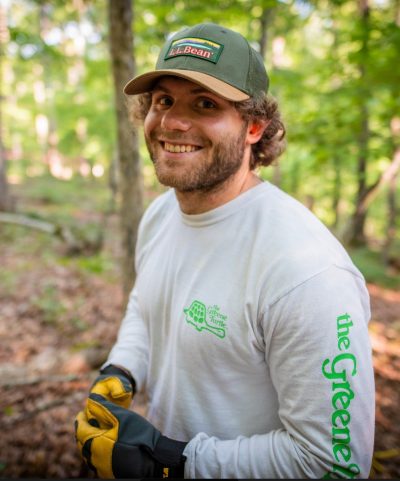WHAT IS GROUND PENETRATING RADAR AND WHY DO GEOSCIENTISTS LOVE TO USE IT?
Ben Eppinger, Virginia Tech
Ben Eppinger, Virginia Tech
Most people interested in earth science enjoy looking at landscapes, whether it be on a hike, via an Ansel Adams photography album, or through the window of a moving vehicle. It’s easy to become enchanted by these expressions of geologic processes and deep time. However, in the Bedrock Critical Zone research cluster, we want to do more than study the surface features of landscapes, and observe what is in store below as well.
To do this, scientists need some type of super power, akin to having x-ray vision or seeing in the dark. X-ray vision is a very apt example: medical professionals cannot see into the body, but they can send x-rays (electromagnetic waves of a particular frequency) into the body and record how they transmit through. In doing so, they create a picture of the bones and organs inside.
Another example from medical imaging is ultrasound, which refers to the use of high frequency mechanical (sound) waves. Unlike x-ray imaging, where technicians observe how waves pass through various body parts, ultrasound imaging relies on waves bouncing off bones and organs, and coming back to where they initially came from. Based on how long it takes for reflections to come back, technicians can infer how far away the structures within are.
Ground penetrating radar (GPR) is the earth scientist's version of ultrasound. It is based on the same principles, except scientists send radar waves into the ground (yes, the same types of waves we use to listen to NPR). GPR is a powerful tool in both manmade and natural environments. Environmental consultants often use GPR to map underground electrical and gas lines before installing groundwater wells, archaeologists use GPR to find buried structures and remains, while earth scientists use GPR to see into landscapes.
Example of a reflecting (top) and diffracting waves (bottom)
When using GPR to look into landscapes, scientists usually focus on two different ways radar waves bounce off structures. Large continuous structures create reflections, while smaller irregular objects create diffractions. For example, reflected waves can be used to identify linear structures, such as soil layers and fractures, while diffractions can be used to locate spherical objects, such as boulders and tree roots. Thus, by sending radar waves into the ground, and paying attention to the reflections and diffractions that come back, scientists can infer important information about the subsurface. This information may pertain to critical environmental features, such as soil thickness, plant rooting strategies, and the location of fracture zones that transmit and store water.
This is all done by sending a radar wave into the ground, seeing how it comes back, and then moving over a small distance and repeating the process. By putting thousands of these soundings side by side, scientists can put together an idea of what the subsurface looks like. If they want to take it a step further, a process called migration can be applied to the GPR data, which takes the information of how incoming waves change with time and location, and turns it into a picture of the subsurface.
Subsurface structure (top), GPR data (middle), and migrated image (bottom)
For more information about how researchers are using GPR to improve how we see into landscapes, better our understanding of trees, and uncover previously untold histories, please check out these following papers.
Yu Liu, James Irving, Klaus Holliger, High-resolution velocity estimation from surface-based common-offset GPR reflection data, Geophysical Journal International, Volume 230, Issue 1, July 2022, Pages 131–144, https://doi.org/10.1093/gji/ggac058
Li Guo, Gregory J. Mount, Sean Hudson, Henry Lin, Delphis Levia, Pairing geophysical techniques improves understanding of the near-surface Critical Zone: Visualization of preferential routing of stemflow along coarse roots, Geoderma, Volume 357, https://doi.org/10.1016/j.geoderma.2019.113953
Kami Fletcher (2022): Are enslaved African Americans buried at Mount Harmon plantation? Space and reflection for national mourning and memorializing, Mortality, https://www.tandfonline.com/doi/pdf/10.1080/13576275.2022.2080541

Ben Eppinger, Virginia Tech